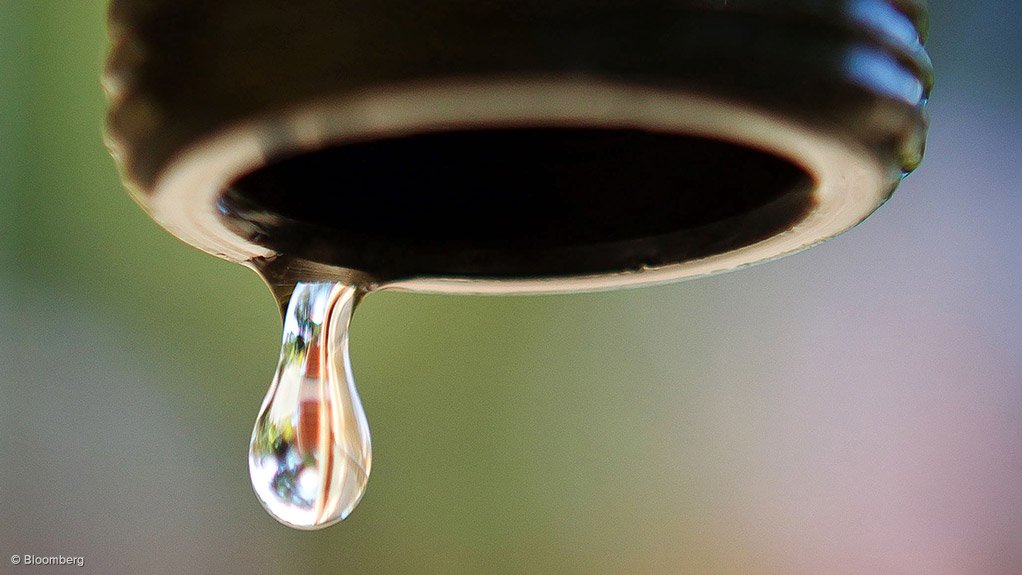A series of unfortunate events led to Johannesburg and surrounding areas experiencing significant water shortages over the past week, City of Johannesburg mayoral committee member for development planning and urban management Roslynn Greeff said at a media briefing on Monday.
State-owned water utility Rand Water COO Sipho Mosai explained that the water shortages were caused by power outages, which coincided with the expected increase in water demand as the season changed from winter to spring.
He explained that Rand Water had taken water from the Vaal dam, which it treated at the Vereeniging and Zuikerbosch purification and primary pumping stations, and pumped it to the Zwartkopjes, Palmiet, Eiekenhof and Mapleton booster pumping stations, which each served certain reservoirs in the Johannesburg area.
Mosai said Rand Water had on September 15 experienced a power outage at its Eikenhof booster pumping station – which received its power from Johannesburg City Power. This resulted in Rand Water being unable to meet the increased seasonal demand in certain areas.
Also speaking at the media briefing, Johannesburg City Power executive operations manager Louis Pieterse explained that, on the day, City Power had experienced an electricity trip at the substation serving the Eikenhof pumpstation as a result of a restricted earth fault, which meant that comprehensive testing had to be done, which took about 13 hours.
Pieterse explained that, normally, a standby transformer would then take over power supply during the period to reduce the impact of the disruption; however, the standby transformer for the Eikenhof pumpstation had given problems and, therefore, not yet been fully commissioned.
He stated that the faulty transformer would now be replaced with a new transformer that would be redirected from the Cleveland substation.
This process would take about 14 days.
Mosai further noted that once the power had been restored to the Eikenhof pumpstation, owing to the high demand, the water pressure had decreased to such an extent that high-lying areas serviced by that pumpstation could not be supplied immediately.
Meanwhile, Rand Water had then also lost power at its Vereeniging primary pumping station, which meant that it was unable to pump enough water to Eikenhof to restore the water pressure.
Mosai added that once power had been restored to the Vereeniging station the engine rooms were flooded, which further delayed the supply of water.
“The good news is that Vereeniging and Eikenhof are back on and pumping at full capacity,” he said, adding that most western Johannesburg areas should, therefore, have water within the next two days if the demand remains constant.
Rand Water then also experienced a power outage at the Mapleton pumpstation, which had subsequently been rectified.
However, on Monday, Rand Water also lost power at its Palmiet pumping station, as a result of cable theft.
Mosai pointed out that Rand Water had been notified by State-owned power utility Eskom that the cables had been replaced, with power to the pumpstation having been restored at about 15:30 on Monday. However, he stated that this did not mean that the areas serviced by this pumpstation would immediately regain water supply, as the reservoirs, which were now empty, first had to be filled.
Mosai did not wish to give an indication of when full supply was expected to be restored, stating that this depended on the levels of the reservoirs, which were also impacted on by demand from people who did have access to water.
He further noted that each of the power outages, as a single incident, would have been able to be well managed as water capacity was generally backed up. However, as the Rand Water system was managed as a single entity, the challenges in various parts of Johannesburg impacted on the rest of the system, as water was “borrowed” from functioning areas to assist areas where water shortages were being experienced.
Ekurhuleni metropolitan municipality head of water and sanitation Phil Mashoko said the municipality would be cautious when restarting the water system, as built up air in the pipes could potentially lead to pipe bursts.
“We are going to have a lot of controlled valve operations in our system, [to mitigate the risk],” he stated.
Johannesburg Water MD Lungile Dlamini added that whether pipe bursts occurred would depend on the type of pipe in the affected area.
He explained that, for example, polyvinyl chloride pipes were more flexible and would, therefore, not be likely to burst. Similarly, steel pipes should be able to resist the pressure; however, areas that had rigid piping were expected to experience problems.
EMAIL THIS ARTICLE SAVE THIS ARTICLE
To subscribe email subscriptions@creamermedia.co.za or click here
To advertise email advertising@creamermedia.co.za or click here











